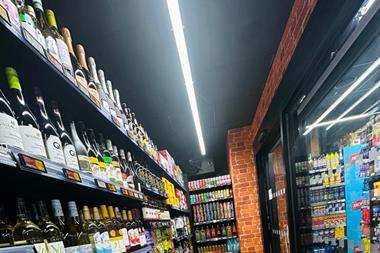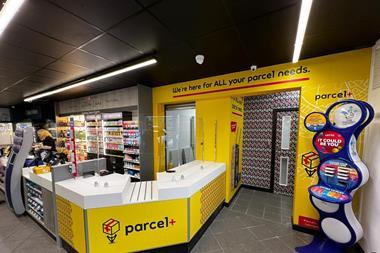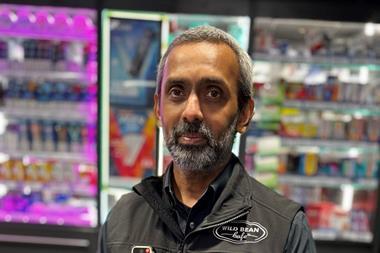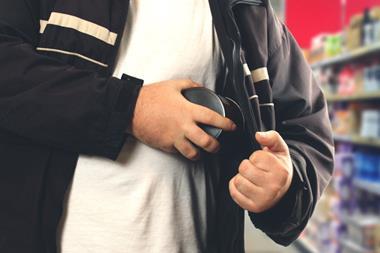The consumer’s thirst for provenance means craft ales have seen an explosion in popularity of late. Here’s how to meet the growing demand
With their quirky labels, weird and wonderful names and big novelty factor, craft beers certainly offer the small store a point of difference from the sea of big-name beer brands found in the multiples. Craft beer may only account for 2% of total beer volume at the moment, but with a growth of 31.6% in volume and a staggering 500,000 new consumers within the past 12 months (Nielsen), it’s a category that’s becoming hard to ignore.
In the past six months, one in five Brits have drunk craft beer, according to Mintel, so the demand is huge. So huge that Oddbins opened its first beer-only store in London earlier this month, selling 300 different ales, most from the UK.
Yet pushing aside the big players to allow space for the new kids on the block is a daunting decision for small stores. From finding suppliers to promoting the lines when you do get them, the category takes some effort to get right.
Colin Rimmer, of Penny Lane Londis in Liverpool, believes the craft beers market is one retailers shouldn’t enter half-heartedly, and advocates starting off with a decent sized range. Colin hasn’t looked back since he and his wife invested in the craft beers sector a year ago. “Craft beers are an upcoming market; it’s something you have to enter wholeheartedly,” he says. “I now have a competitive advantage over other retailers as most of them haven’t cottoned on to crafts yet.”
In the year Colin has been selling them he has been continuously increasing his stock; his store now features 220 lines from different parts of the world such as America, Japan, Europe and, of course, local breweries. “One line doesn’t necessarily sell better than the other; it’s all down to personal preference and exploration,” explains Colin.
He believes it is important to keep adding excitement and is always on the lookout for new lines, particularly those from the US market which he says trades 50 times the amount of craft beers compared with here in the UK. He orders his direct from the brewers via the internet.
Amarjit Bhdaal of Spar Auckley in Doncaster was one of the first to get in on craft beers and has stocked them for more than three years. He was inspired by a range of local craft ales stocked in a store he visited in Kent and he decided to take the idea back to Doncaster. “I found a supplier local to me in Yorkshire, Yorkshire Ales, which sells hundreds of different ales from micro breweries within the area.” Amarjit started by selling six lines and has steadily increased the number to 25.
Amarjit says the best place to look for suppliers is the internet. “Check out your local micro breweries on the internet and get in touch. Introduce a few lines first and see how well received they are.”
Craft beers and ales aren’t just available from local suppliers, though. London retailer Mehmet Guzel of Simply Fresh, Bethnal Green, obtains his crafts from both local and international suppliers. He says stocking the home-grown beers has its advantages, though: “Local breweries are very vocal in their marketing, offering tastings and the chance to see the brewery.”
Mehmet and Colin agree that local suppliers are a great place to start, but recommend going big from the outset. “If I stocked a couple of ales they wouldn’t have the same impact as my larger range,” says Mehmet. “They can be seen immediately when a customer enters the store.” He also makes space in the fridges to put some of his craft ales together. “People like a craft beer that’s ready to drink, just like any other alcoholic beverage.”
Mehmet uses 10 to 12 breweries, giving him 30 different lines at any one time. But he believes it’s important to let customers know when there is something new in stock. He adds: “I rotate the stock each month, highlighting the new ales with POS material.”
Deciding where to place the ales is another important issue - should you site them with the better-known beers that customers expect to see, or break away altogether? Mehmet believes that putting all the crafts in one area is the key to getting the customers’ attention. Amarjit follows the same idea, siting all his crafts together, beers on one side, ales on the other, but still in the same proximity.
Amarjit uses POS material in the form of small signs beneath each bottle to highlight their provenance, but he also runs deals to promote them further. “Since day one I have run a three for £5.50 promotion. Customers like to experiment with different ales and they more commonly buy in multiples.”
Although selling the ales like this doesn’t give Amarjit the biggest profit margin, he says it works for him and his customers. “I earn between a 15% and 25% profit margin when I sell on a ‘three for’ deal as I commonly make 20%-25% on each bottle.”
However, research from Mintel shows that Amarjit may be able to make a bigger profit, with 34% of beer drinkers saying they would be prepared to pay more for craft beers.
Colin, whose crafts sell singularly at about the £3 mark, finds his sales grow when he runs a promotional price on multiple bottles. He explains: “People come in and, overwhelmed by my lines, want to try lots of different types, so I offer a discounted priced when customers buy anything from three to nine bottles.”
Mehmet has a different view when it comes to promoting craft ales through price. He believes “they sell themselves”. Instead, Mehmet interacts with his customers, asking them what they want to see in the shop and holding product tastings to enlighten new consumers and encourage more sales.
Another technique to stimulate sales is using social media. Amarjit is keen to use Twitter to tweet to followers about his current crafts range, while Colin uses the store’s Facebook page to market his crafts, uploading pictures and encouraging social discussion. “People find me on Facebook and will come to my store just for my extensive range of craft beers,” he explains.
Trends
Big brands get in on the act
It’s not just niche brands that are getting in on the act; some of the bigger names are embracing the craft revolution, too, having realised the potential for lines that tap into the trend for greater provenance.
Last summer, Diageo introduced the Dublin Porter and West Indies Porter as part of its Guinness Brewers Project, a group of brewers given free rein to create new variants for the brand.
Head of activation in the on trade Katerina Podtserkovskaya says the new lines are expected to deliver £58m incremental value to the premium ales category over the next few years across the on and off trade.
“Beer is currently experiencing a craft revolution, driven by consumers demanding more authentic and rewarding experiences from products,” she says. “The launch of Guinness Dublin Porter and Guinness West Indies Porter taps into this and is set to ignite the category by making it more accessible to new customers through the Guinness trademark.”
According to Podtserkovskaya, the move towards craft was something the brand couldn’t ignore. “Consumers are seeking a richer value or experience from what they consume,” she says. “They are interested in the stories, ingredients and provenance of products and this is a trend we are seeing across food and drink as a whole.”
Marketing
Making your own marque
Richard Williams of Williams in Somerton, Somerset, has taken craft ales selection to the next level by introducing his own-brand beer. Among the 50 varieties Richard sources from local breweries and Nisa is Somerton Amber Ale, a brew from Bath Ales branded with Williams’ own name.
When deciding to add a beer carrying the store’s name, Richard contacted numerous local suppliers to find one that would allow him to put his own mark on a fine ale. “Bath Ales was very accommodating and enabled us to feature their best-selling line with a label we had designed ourselves.” he explains.
Richard sells the ales for £2.39 each, with regular promotions to maintain interest.





















No comments yet